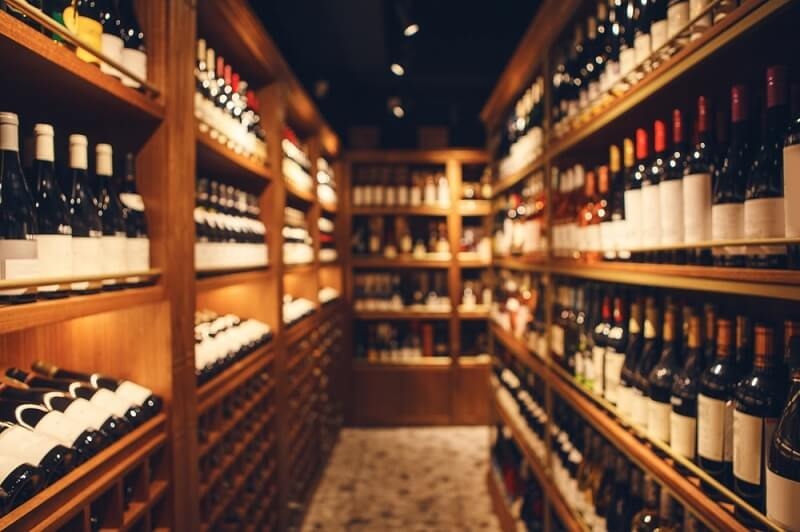
Wine is more than just a beverage; it’s an experience. Whether you’re a casual enthusiast or a seasoned collector, knowing how to store wine properly is essential to preserving its flavor, aroma, and quality. Improper storage can turn a prized bottle into a disappointing sip. Still, with the proper techniques, you can ensure your wine ages gracefully and tastes exceptional every time you open a bottle.
In this guide, we’ll explore the fundamentals of wine storage, from understanding the importance of temperature and humidity to creating the perfect wine cellar. Whether you’re storing a few bottles or building a collection, these tips will help you master the art of wine preservation.
Wine is sensitive to its surrounding environment. Lighting, temperature, humidity, and even vibrations may induce changes in chemical composition and eventually affect its flavors and fragrances. The science of wine storage is not the mere placing of bottles in an air-conditioned room but how to ensure this stable environment creates a gradual age for the wines.
Wine storage is an investment for collectors. A well-preserved bottle will increase in value over time, while improper storage can lead to spoilage. Even casual drinkers want to know that every glass is as enjoyable as the winemaker intended.
To preserve the flavor and quality of your wine, you need to pay attention to several critical factors. Let’s break them down:
The most essential condition for wine storage is temperature. If it's too hot, the wine will age too soon and lose complexity. If it's too cold, the aging process will simply come to a standstill and stunt the wine's growth.
Keep your wine stored in a good wine cooler or cellar with climate control. In fact, wine should not be stored in a kitchen or garage—the temperature change is too severe.
Humidity is crucial in preserving wine, especially if the bottles have sealed corks.
Light, particularly ultraviolet (UV) rays, degrades wine over time. UV light breaks down organic compounds in wine, causing unpleasant flavors and aromas.
The vibration may disturb the sediment in wine and, hence, may cause an effect during its aging process. Of course, this will be a concern for an extended storage period. However, it is worth knowing.
Cork-sealed bottles could also be affected in terms of length of life by their placement.

Investing in a wine cellar is the ultimate solution if you're serious about wine storage. A well-designed cellar provides the ideal environment for preserving and aging wine. Here’s how to create one:
You can choose a location. Basements are normally the location for wine cellar installation because they tend to be calmer and have better temperature stability. However, proper insulation and climate control can quickly transform any room into a wine cellar.
Your cellar should have the proper insulation to preserve a constant temperature and level of humidity. A cooling system intended for use in wine cellars will regulate the environment.
Wine racks must be of robust material without a foul odor. Materials must include stainless steel or untreated wood. Ensure that the wine racks have shelves where bottles are kept horizontally accessible.
You can use a thermometer and hygrometer to control the temperature and humidity. With more advanced systems, you could monitor the condition of your wines using your smartphone with remote app connectivity.
Not everyone has the space or budget for a dedicated wine cellar. Fortunately, there are other options for proper wine storage:
Wine coolers are compact, temperature-controlled units designed specifically for wine storage. They come in various sizes, making them an excellent option for small spaces.
A wine cabinet is larger than the cooler and may hold more bottles. It frequently has dual temperature regulation zones, so red and white wine can be stored in ideal conditions.
If space is limited, this is an excellent idea: convert the space under your stairs into a cozy little nook for your wines. Proper insulation and cooling ensure the job is done.
Climate-controlled, off-site storage facilities that monitor the conditions for serious collectors offer an ideal way to keep valuable bottles cool.
Not all wine is meant for aging. Many bottles are best consumed within a few years of purchase. Here’s how to store wine for short-term enjoyment:
Even with the best intentions, making mistakes when storing wine is easy. Here are some common pitfalls to watch out for:
Proper wine storage is more than just a practical concern—it’s a way to honor the craftsmanship that goes into every bottle. By paying attention to temperature, humidity, light, and other factors, you can ensure that your wine remains a source of joy and delight for years.
Whether you’re building a wine cellar or simply storing a few bottles in a fabulous closet, these tips will help you preserve the flavor and quality of your wine. After all, every bottle tells a story, and with proper care, you can ensure the story ends with a perfect sip.
This content was created by AI